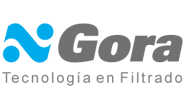FAQS
What is the difference between a filter housing and filter element?
A filter is comprised of two parts. The housing refers to the pressurized container and contains the filter element. The latter is responsible for carrying out the selected filtration.
What is differential pressure?
Differential pressure, also known as Delta P, indicates the difference between the pressure at the inlet and at the outlet of the filter. This value represents the restriction that the equipment is generating on the system. The differential will be dynamic and will increase as the filter element becomes clogged.
What is the filter medium?
It is the medium that allows fluids to pass through it (it is permeable) but that prevents the passage of solid particles of a certain size (and larger). Its correct selection and sizing will ensure the efficiency of the element and the initial pressure drop.
How often do I have to change the filter element?
The only valid indicator to determine when to change the filter element is the differential pressure. Each element will have a recommended replacement differential to ensure the correct operation of the filter.
How long will the filter element last?
The useful life of a filter element will depend on the concentration of existing contaminants, the available filtering surface and the selected micron rate. In order to ensure a certain useful life, it is necessary to have a pollutant analysis distributed by size. This determination will be valid as long as the process conditions are not modified.
What is the efficiency of a filter?
The efficiency of a filter is determined by the filter element selected and tells us the percentage of particles of a certain size that will be retained by it.
What is the difference between nominal efficiency and absolute efficiency?
Nominal Efficiency: Arbitrary retention value indicated by the filter manufacturer for a given micron rate.
Absolute Efficiency: is the diameter of the largest rigid and spherical particle that will pass through a filter under specified test conditions. This is the indication of the largest pore size of the filter element.
What information do I need to provide to receive a quote?
To specify a filter it is necessary to know the process data (fluid, flow, pressure, temperature) and the cleaning requirements (type of contaminant, selected micron rate and distribution of the contaminant).
Do you design customized filters?
Gora is a versatile company that adapts to the needs of each company. All contacts with our customers begin with a survey of operational data and process requirements to then provide advice and the selection of a filter according to the specific needs of each case. We understand that it is our designs that must adapt to the client’s operating conditions and not the other way around.
¿Diseñan reemplazos de elementos filtrantes aun desconociendo el origen?
Since 1958 we have developed more than 10,000 product codes that represent filter elements for which our customers did not have replacements or simply did not receive the due attention from the original manufacturer. This task continues today with the aim of providing a comprehensive solution to our customers. All our substitutes equate in efficiency and performance to the originals.
¿En qué consiste la construcción de filtros especiales?
The knowledge acquired during our years of history allows us to combine filtration techniques with different design and manufacturing criteria in order to provide filtering solutions to processes that exceed the market standards.


